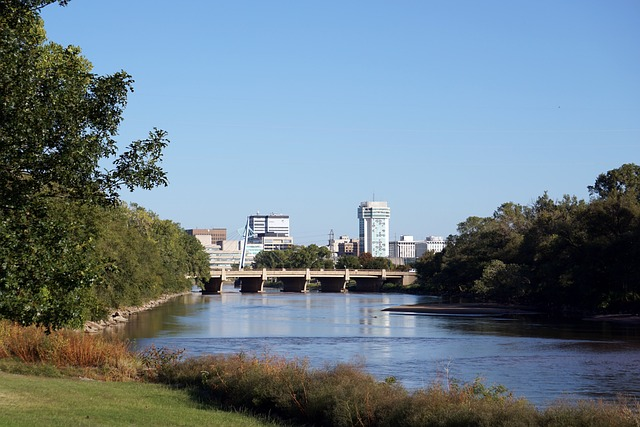
Home to the St. Louis Cardinals, Missouri is also sometimes called “The City of Fountains,” thanks to its high concentration of free-flowing founts. With a rich history reaching back before the time of the legendary Jesse James, who was shot down in St. Joseph (from U.S. News), there is more to this intriguing area of the United States than just old stories or big names. Let’s take a look at the best places to invest in Missouri as well as what as piqued the interest of intrepid real estate investors looking to expand their portfolio in healthy economies.
New to passive real estate investing?
Explore Ark7 OpportunitiesWhat Makes A Real Estate Market Attractive For Real Estate Investors?
Real estate investment has long been a favored avenue for wealth creation and financial stability. The allure of this asset class lies in its potential for long-term capital appreciation, rental income, and portfolio diversification. However, not all real estate markets are created equal, and the attractiveness of a particular market can vary significantly. Savvy real estate investors understand the importance of carefully selecting the right location for their investments. So, what makes a real estate market attractive for real estate investors?
Whether you’re a seasoned real estate investor looking to expand your portfolio or a novice eager to get started, understanding what makes a market attractive is the first step towards success. Let’s take a look at some of the most influential factors:
1. Economic Stability and Growth:
Economic stability is one of the fundamental factors that make a real estate market attractive to investors. A region with a stable and growing economy is more likely to offer long-term opportunities for real estate appreciation and rental income. Investors often look at indicators such as gross domestic product (GDP) growth, employment rates, and business development as signals of economic health.
Markets with diverse and robust economies, driven by multiple industries and job sectors, tend to weather economic downturns more effectively. Consider cities with a mix of technology, healthcare, education, and manufacturing sectors. A diversified economy can help reduce the risks associated with economic downturns in any single industry, and the presence of large, stable employers or government institutions can provide a steady source of rental income.
2. Population Growth and Demographics:

Population growth and demographic trends play a crucial role in the attractiveness of a real estate market. An increasing population often leads to higher demand for housing and commercial properties, which, in turn, can drive property values and rental income.
Look for markets experiencing net in-migration, as this indicates that people are moving to the area, creating demand for housing. Cities with growing job opportunities, educational institutions, and a high quality of life often attract newcomers and rental markets.
3. Real Estate Market Trends:
It’s essential to analyze current real estate market trends within a specific area. This involves studying data on property values, rental rates, and the pace of new construction. Markets with a history of consistent appreciation in property values are often seen as attractive.
However, it’s also important to consider the current state of the market. A market that is currently experiencing a slump or stagnation may offer opportunities for value investors. Conversely, a rapidly appreciating market might be an ideal choice for those seeking quick returns through property flipping.
Pay attention to the supply and demand dynamics within the market. Markets with a shortage of housing relative to demand can provide excellent rental income and appreciation potential.
4. Infrastructure and Development:
Infrastructure and development within a real estate market can significantly impact its attractiveness to investors. Cities with well-maintained infrastructure, such as highways, public transportation, and utilities, often provide better prospects for real estate investment.
Additionally, areas with planned or ongoing development projects can signal future growth and appreciation potential. Investments in transportation, public spaces, and amenities can enhance the quality of life in a community and make it more appealing to residents, businesses, and investors.
It’s important to monitor municipal plans and initiatives, as these can indicate the direction a city or region is headed in terms of growth and development.
5. Regulatory Environment:
The regulatory environment of a real estate market can significantly impact the ease and profitability of investment. Investors should be aware of local zoning laws, building codes, property taxes, and rent control regulations.
A market with business-friendly regulations and tax incentives can encourage real estate development and investment. On the other hand, overly restrictive or unpredictable regulations can deter investment and hinder property development.
It’s crucial for investors to conduct thorough due diligence on the regulatory environment of a market before committing to an investment. Consulting with local experts and legal professionals can provide valuable insights.
6. Rental Yields and Cash Flow:
Rental income is a primary source of returns for real estate investors, and rental yields play a vital role in determining the attractiveness of a market. The rental yield is the annual rental income expressed as a percentage of the property’s purchase price.
Markets with high rental yields are often attractive to investors looking for immediate cash flow. However, high rental yields may sometimes be associated with areas that have high levels of risk or low long-term appreciation potential. Investors should carefully balance rental yields with their long-term investment goals.
Calculating your expected cash flow, taking into account expenses like property management, maintenance, and property taxes, is crucial when evaluating the rental income potential in a market.
7. Market Liquidity and Investment Options:
The liquidity of a real estate market is essential for investors who may want to buy, sell, or exchange properties quickly. Highly liquid markets typically have a large number of buyers and sellers, providing more flexibility and pricing stability.
Additionally, investors should consider the types of investment options available in a market. Different markets may be better suited for specific real estate asset classes, such as residential, commercial, industrial, or hospitality properties. Understanding the mix of property types and investment options in a market is essential to making informed investment decisions.
8. Risk and Market Volatility:
Real estate investment, like any investment, comes with risks. Markets can be influenced by local and global economic events, natural disasters, and other unforeseen factors. Investors should consider the level of risk they are comfortable with and assess a market’s historical performance during periods of economic downturns.
Markets with lower levels of volatility and a track record of stable property values may be more attractive to conservative investors. On the other hand, more risk-tolerant investors may seek out markets with higher growth potential, even if they come with greater volatility.
9. Market Timing and Cycles:
The timing of your investment can greatly affect its potential for success. Real estate markets go through cycles of expansion, peak, contraction, and recovery. Investors should aim to enter a market during a phase that aligns with their investment goals.
Buying during a market downturn can offer opportunities for value investors, while entering during an expansion phase can provide quick appreciation potential. Timing the market correctly requires research, analysis, and sometimes a bit of luck.
10. Local Amenities and Quality of Life:
The quality of life in a given area can significantly impact its attractiveness to both residents and investors. Markets with excellent schools, healthcare facilities, parks, cultural attractions, and low crime rates are more likely to retain and attract residents.
Investors should also consider the presence of shopping centers, restaurants, and other amenities that enhance the desirability of a location. Areas with a strong sense of community and a high quality of life are more likely to experience sustained demand for real estate.
The Best Places to Buy Rental Investment Property in Missouri
When it comes to real estate investment, location is key. In the state of Missouri, there are several cities and neighborhoods that stand out as prime destinations for rental investment properties. Whether you’re an experienced real estate investor looking to diversify your portfolio or a newcomer interested in getting started, Missouri offers a range of opportunities.
St. Louis, Missouri

St. Louis is a city with a rich history and a diverse real estate landscape. There are several neighborhoods within St. Louis that offer attractive opportunities for rental property investors.
Shaw Historic District
The Shaw Historic District is known for its stunning architecture and tree-lined streets. It’s a popular choice for both residents and investors. The area’s historic charm, proximity to the Missouri Botanical Garden, and well-preserved homes make it a prime location for rental properties.
Benton Park Historic District
Benton Park is another historic district in St. Louis that attracts investors. With its historic row houses, parks, and trendy local businesses, it offers a unique blend of old-world charm and modern amenities.
Debaliviere Place
Debaliviere Place is a diverse and vibrant neighborhood in St. Louis. It’s located near Forest Park, one of the largest urban parks in the United States. Proximity to cultural institutions, universities, and public transportation make it an appealing choice for renters.
Downtown West
Downtown West is experiencing a resurgence, with new developments and a growing business district. Investors who get in early may benefit from the area’s revitalization and the demand for urban living.
Why invest in St. Louis?
St. Louis offers a variety of neighborhoods with affordable real estate, a strong job market, and a low cost of living. The city’s diverse economy, cultural attractions, and educational institutions make it an appealing destination for renters.
Saint Joseph, MO
Saint Joseph, located in the northwestern part of Missouri, is another city that attracts real estate investors. It’s known for its historical significance and local charm.
Holts Summit, MO
Holts Summit, a smaller city in Missouri, offers investment opportunities for those looking for a quieter, suburban environment. Its proximity to Jefferson City and the state capitol makes it an attractive choice for renters who work in the area.
Lees Summit, MO
Lees Summit, located in the Kansas City metropolitan area, is a growing city with a strong job market and a family-friendly atmosphere. It’s an ideal location for investors looking to cater to families and professionals.
Kansas City, MO

Kansas City is one of Missouri’s largest cities and offers a diverse range of neighborhoods for real estate investors. Here are a few areas worth considering:
Greater Downtown Kansas City
Downtown Kansas City has been experiencing a resurgence, with new developments and a thriving arts and culture scene. Rental properties in this area can cater to professionals and young urban dwellers.
Central West End
The Central West End neighborhood is known for its historic mansions, tree-lined streets, and proximity to the renowned Barnes-Jewish Hospital and Washington University. This area offers a mix of upscale rental opportunities.
Briarcliff West
Located in the Northland area of Kansas City, Briarcliff West is a growing community with excellent schools and a range of housing options. It’s an attractive choice for families.
Why Invest in Kansas City?
Kansas City boasts a diverse economy, cultural attractions, and a growing job market. The cost of living is relatively low, making it an appealing destination for both residents and investors.
Honorable Mention: Wichita, Kansas

While not in Missouri, Wichita, Kansas, deserves an honorable mention. It’s a neighboring city that offers affordable real estate options and a growing job market. Wichita’s affordability and potential for rental income make it an attractive destination for investors in the region.
